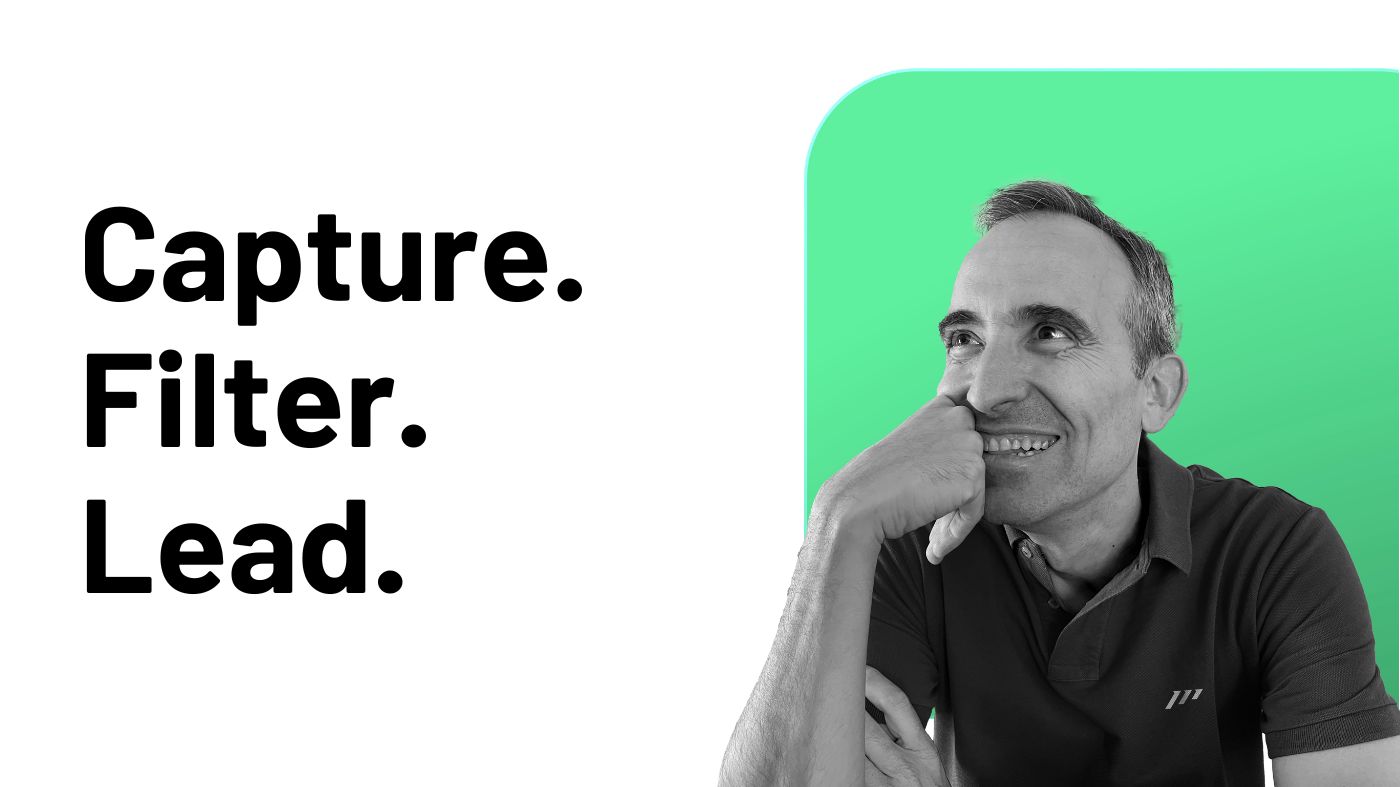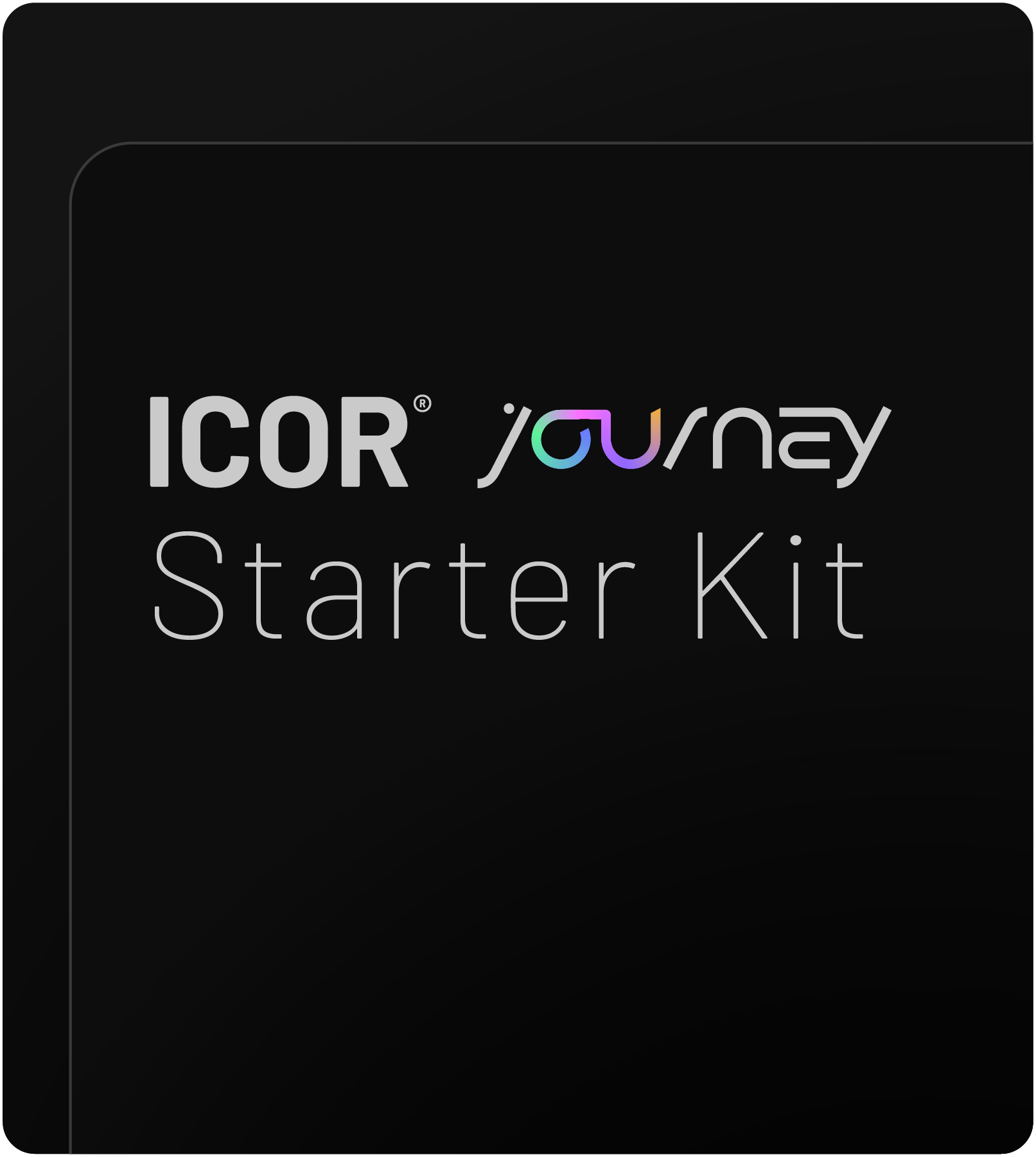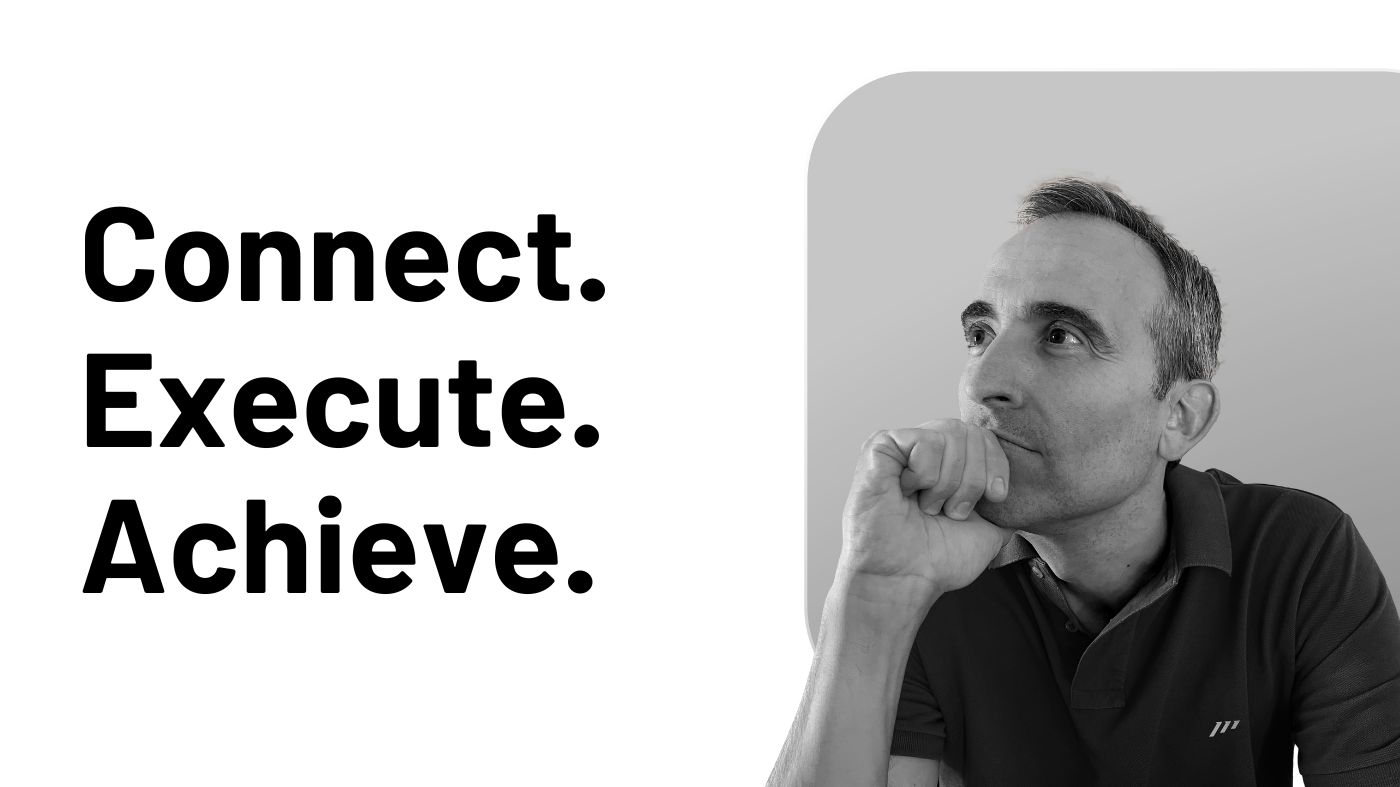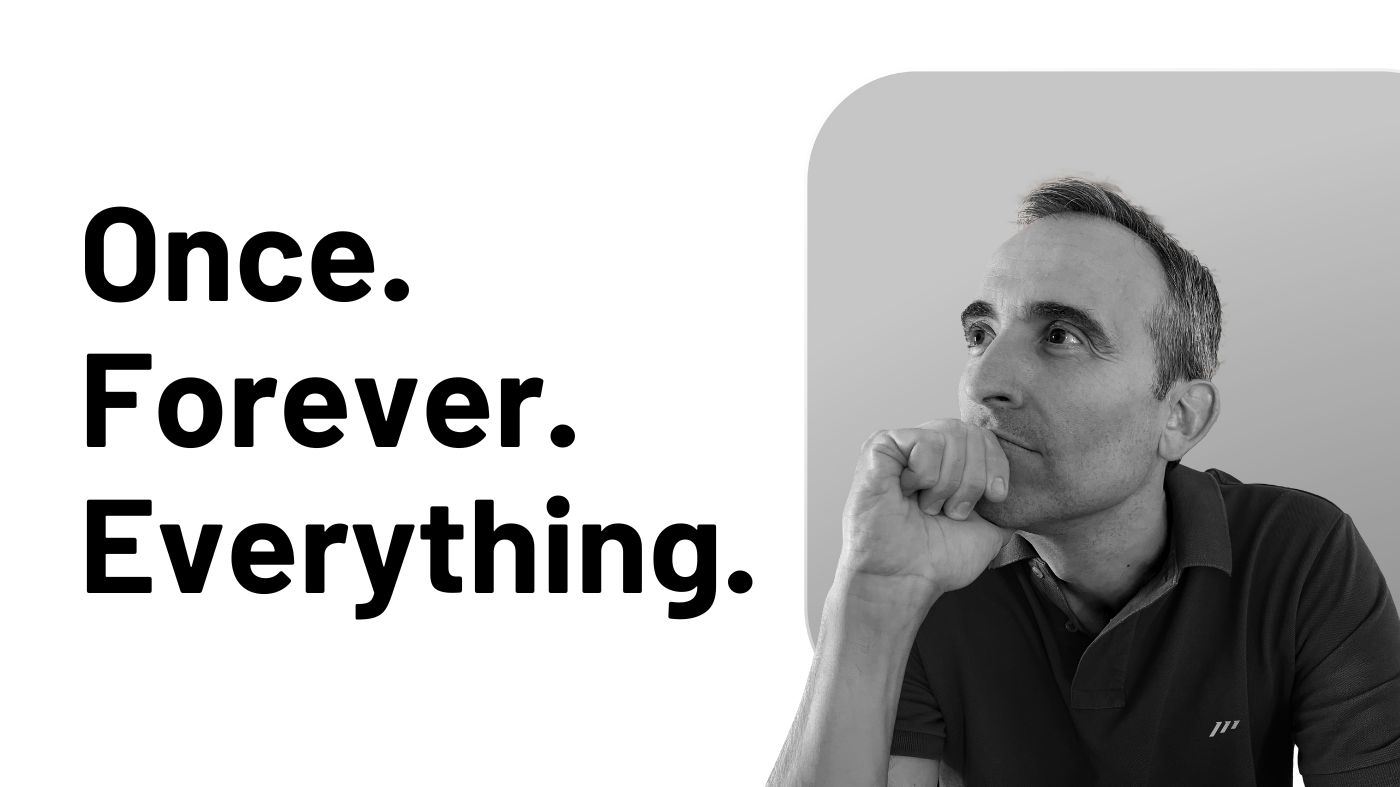Every business leader receives around 250 decisions worth of information each day: reports, emails, market analyses, competitor updates, industry news, internal communications. By the time you finish this article, another 30 items will likely demand your attention.
Picture this:
You’re sitting in your office, armed with the latest productivity apps and organizational tools.
Your morning started with determination to tackle that strategic plan, but reality hit fast: 47 unread emails, 13 Slack notifications, 3 urgent reports, and an inbox full of industry newsletters you’ve been meaning to read since last month.
This isn’t just about feeling overwhelmed. It’s about business impact.
When McKinsey surveyed top executives, 77% reported that information overload significantly impaired their decision-making ability.
Every delayed decision, every missed insight, every overlooked opportunity carries a real cost.
You’ve tried everything: complicated folder systems, multiple note-taking tools, countless browser tabs, and even hiring assistants to pre-filter your information.
Yet somehow, the avalanche keeps growing.
The tools meant to help are now part of the problem.
The truth is simple: The solution isn’t about managing information . It’s about thinking differently about information.
After years of working with thousands of business leaders and experiencing these challenges firsthand, I’ve discovered that the answer lies in a counterintuitive approach: less processing, more thinking.
In the next few minutes, I’ll show you exactly how to transform information from your biggest headache into your strongest competitive advantage.
The Hidden Cost of Information Overload in Business
Information isn’t just content. It’s currency.
And right now, most business leaders are bleeding this currency at an alarming rate.
Let’s put real numbers to this challenge.
The average executive spends 23% of their workday searching for information they’ve already seen.
That’s $57,000 per year per leader thrown away on just looking for existing data.
For a mid-sized company with 20 decision-makers, that’s over $1.1 million in lost productivity annually.
“It’s not information overload. It’s filter failure.” — Sam Owen
But the true cost runs deeper than lost time.
When Harvard Business Review analyzed decision-making patterns, they found that information-overwhelmed leaders consistently fell into three expensive traps:
-
First, analysis paralysis. Too much information leads to delayed decisions, causing market opportunities to slip away while competitors move forward.
-
Second, shallow processing. Racing through excessive information results in surface-level understanding. Leaders miss critical patterns, overlook essential details, and make decisions based on incomplete comprehension.
-
Third, strategic blindness. Buried under daily information avalanches, leaders lose sight of long-term thinking. The urgent constantly overshadows the important, turning visionary leaders into reactive managers.
Your team feels it too.
When leaders struggle with information overload, it cascades through the organization:
-
Meetings become inefficient.
-
Communications get fragmented.
-
Innovation slows.
-
Culture suffers.
The most dangerous part? This cost compounds silently.
Like a slow leak in your business operations, it drains resources day after day without triggering any immediate alarms.
But here’s the opportunity: Leaders who master information processing gain a powerful competitive edge.
They make faster, better-informed decisions. They spot trends earlier. They turn information into insight while others drown in data.
In the next section, I’ll reveal the framework that transformed how thousands of business leaders approach information.
It’s not about working harder. It’s about thinking smarter.
Transform Your Business Thinking: Shallow vs Deep Thinking
Your brain processes information in two fundamentally different ways.
Understanding and leveraging these distinct processes is crucial for business success.
At the Paperless Movement®, we’ve developed ICOR®, a revolutionary methodology that has transformed how thousands of business leaders process information.
The concepts of Shallow Thinking and Deep Thinking, fundamental to ICOR®, align perfectly with how our brains naturally process information.
Neuroscience shows us that our brains operate in two distinct modes.
When we engage in Shallow Thinking, we activate our brain’s quick-response system. This is our brain’s efficient triage center, designed for rapid processing and initial assessment. It’s quick, efficient, and perfectly suited for initial information processing.
Deep Thinking, by contrast, engages our brain’s executive function and analytical centers. This is where complex problem-solving, strategic planning, and innovative thinking occur.
“We must ignore much to learn a little.” — Mario Augusto Bunge
Research shows these two cognitive processes can’t effectively operate simultaneously.
Our brains literally use different neural pathways for each type of thinking.
ICOR® methodology leverages this understanding of brain function.
By separating Shallow Thinking from Deep Thinking, we work with our brain’s natural processes instead of against them.
Most professionals make the costly mistake of trying to engage both systems simultaneously, creating cognitive overload and reducing effectiveness in both modes.
Business leaders who implement ICOR®’s approach consistently report significant improvements in their decision-making speed and substantial reductions in information anxiety. They stop feeling overwhelmed because they’re working in harmony with their brain’s natural processing methods.
This isn’t just theory.
ICOR® is a battle-tested methodology built on solid neuroscientific principles and refined through years of implementation with busy professionals who faced the same challenges you do.
Every success story started with this fundamental shift in thinking.
In the next section, I’ll show you exactly how to set up your digital environment to support these two thinking modes, ensuring you never lose valuable information while maintaining complete mental clarity.
Your Digital Front Door: Setting Up an Effective Information Filter
Information needs proper management.
Without it, it floods your digital workspace and clutters your thinking process.
At the Paperless Movement®, ICOR® was born from years of personal experience, countless iterations, failures, and ultimately, successes.
Today, thousands of busy professionals validate its effectiveness through their own transformations.
Your information entry point is a dedicated system where all external information lands first. Every piece of content, whether it’s industry news, market research, or competitor analysis, enters through this single point.
This system creates clear boundaries between Shallow Thinking and Deep Thinking.
“An individual without information can’t take responsibility. An individual with information can’t help but take responsibility.” — Jan Carlzon
The beauty of this approach lies in its clarity: when information enters your system, you immediately know whether it needs deep processing or should remain in your Shallow Thinking system for future reference.
This keeps valuable insights accessible without cluttering your strategic thinking space.
The key to making this work is understanding that systems aren’t about tools.
You can implement both your Shallow Thinking and Deep Thinking systems within a single tool. What matters is the clear separation of these two thinking modes and the intentional processing of information.
The most crucial aspect?
Your Shallow Thinking system must work fast.
You’re not analyzing deeply at this stage. You’re simply capturing and categorizing, keeping what might be valuable for future reference while identifying what truly needs deep processing.
In the next section, we’ll explore how to move information intentionally from Shallow to Deep Thinking, ensuring every business insight reaches its full potential.
The Power of Intentional Processing
In today’s AI-driven world, the instinct is to automate everything.
But at the Paperless Movement®, we’ve discovered through ICOR® that manual, intentional processing of information creates unique value that no automation can match.
Consider this: When you manually move information from your Shallow Thinking to your Deep Thinking system, you’re not just transferring content. You’re making a conscious decision. You’re saying, “This deserves my strategic attention.”
This intentional pause serves multiple purposes:
-
First, it forces you to evaluate the true value of information.
-
Second, it prevents your Deep Thinking system from becoming cluttered with half-relevant content.
-
Third, it creates a moment of reflection that often sparks initial insights.
The manual aspect is crucial.
While it might seem efficient to automatically sync information between systems, this automation bypasses a critical thinking step.
It’s like having an assistant who forwards every email to your inbox without screening. You end up with more noise, not more signal.
Business leaders often resist this manual approach at first. “Isn’t this a waste of time?” they ask.
But those who embrace it consistently report a surprising discovery: The manual process becomes a valuable thinking ritual.
The act of consciously moving information creates space for initial patterns to emerge.
This intentional processing also solves a common business challenge: the gap between information collection and information use.
How often have you saved dozens of articles or reports, only to never look at them again?
When every piece of information in your Deep Thinking system is there because you consciously put it there, its value and purpose remain clear.
Remember:
-
Your Shallow Thinking system is for quick capture and potential future reference.
-
Your Deep Thinking system is for active processing and strategic insight.
-
The bridge between them must be intentional and manual.
In the next section, we’ll explore how to protect your Deep Thinking space from the constant noise of incoming information, ensuring your strategic thinking remains clear and focused.
Protection Through Process: Guarding Your Deep Thinking Space
Your Deep Thinking system is your most valuable business asset.
It’s where strategic decisions emerge, where innovations take shape, and where your competitive advantage develops.
At the Paperless Movement®, ICOR® emphasizes one crucial principle: protect this space at all costs.
Think of your Deep Thinking system as your company’s R&D lab.
You wouldn’t allow random materials to enter your product development facility.
Similarly, your Deep Thinking space needs strict quality control.
This protection isn’t about creating barriers. It’s about ensuring that when you sit down for strategic work, you’re engaging with information that truly deserves your analytical attention.
Every item in your Deep Thinking system should have earned its place through conscious evaluation.
The most dangerous threat to your Deep Thinking space isn’t external noise.
It’s the temptation to bypass your own process.
In moments of urgency, you might feel compelled to dump information directly into your Deep Thinking system, skipping the Shallow Thinking phase.
This seemingly innocent shortcut undermines the entire system.
Protection comes through process adherence.
When you maintain the boundary between Shallow and Deep Thinking, you create a natural filtering system. Information must prove its worth before entering your strategic thinking space.
This strict protection delivers unexpected benefits.
Business leaders using ICOR® report greater confidence in their strategic decisions because they know every piece of information in their Deep Thinking system has been intentionally selected and validated.
When you sit down for Deep Work, you’re not sorting through a mess of half-relevant information. You’re engaging with carefully curated content that deserves your strategic attention.
This clarity accelerates decision-making and improves the quality of your insights, transforming how you process information and make strategic decisions.
Here’s My Battle-Tested System for Processing Tons of Daily Information
Before diving into my system, let’s clarify two fundamental distinctions that shape how we process information.
First, let’s understand the difference between your Inner and Outer Worlds.
Your Inner World contains information that originates directly from you: your thoughts, ideas, and notes from meetings. You are the creator of this content.
Your Outer World encompasses all external information: internet articles, books, podcasts, YouTube videos. While others create this content, you can enhance it with your thoughts and annotations.
Second, we need to define what a highlight is.
For me, a highlight is always Shallow Thinking. It’s just an inspirational nugget I want to revisit later, ideally through a serendipity system. It’s not a conclusion or deep insight. It’s not something I need to work on. That’s key.
Readwise Reader is where all my Shallow Thinking from the Outer World lives. Period.
That’s how you create boundaries between a tool and your productivity system.
Reader is the space where all the content from the Outer World comes in and can be consumed calmly, no matter the device.
What makes it powerful is its triage system based on three simple inboxes: Inbox, Later, and Archive.
-
Everything lands in the Inbox by default.
-
Only content I’m genuinely interested in consuming moves to Later.
-
Anything that no longer deserves attention goes to Archive. This creates instant clarity.
Here’s a powerful technique I regularly use: the liberation technique.
Sometimes, I move everything from my Inbox (and even Later) to Archive in one go.
And you know what? Nothing terrible happens.
I’m still here, and my Shallow Thinking system breathes again, starting fresh.
“Tech adoption without process innovation is just window dressing.” — Chris Bedi
Speed is crucial in Shallow Thinking.
When I capture information, I tag it quickly using my main buckets and send it to the right inbox. This should take milliseconds.
That’s it. No analysis. No deep processing. Just quick capture and categorization.
While auto-tagging can help, I make a point to tag manually and, when possible, add a short comment.
That small action gives you context for future retrieval and reminds you why you thought it was worth capturing in the first place.
Reader acts as my protective barrier.
It stops random information from cluttering my Deep Thinking system, where the real sense-making happens.
Never connect your Deep Thinking tools to your Shallow Thinking ones automatically.
The move from Shallow to Deep must be intentional. Only you can make that call.
No automations. No AI. No background systems.
When I find something worth deep processing, here’s my exact workflow:
-
I send it to Later in Reader. I don’t act on it immediately.
-
After 2-3 days, if it still feels valuable, I create an action in my task manager, add a link to the content, and schedule it.
-
When the time comes, I do the work. Complete it. And grow.
That’s how you give real meaning to a piece of content.
The best sync is manual.
People often associate tech with automation and forget the power of doing things manually. That’s a mistake.
Manual work gives you control, context, and, most importantly, learning.
It is by doing that we grow and evolve.
If we skip that step, we lose the deeper layer that gives purpose to our productivity system.
This entire approach is about protecting your Deep Thinking space and letting tools do what they’re best at.
It’s not about complex workflows or fancy tools. It’s about creating clear boundaries and making intentional decisions about what deserves your deep attention.
Measuring Success: Business Metrics That Show It’s Working
Success in information management isn’t about the volume of content you process.
It’s about the quality of decisions you make and the clarity of thought you achieve.
Here are the real indicators that your new system is working:
-
Faster Decision-Making: When information is properly organized between Shallow and Deep Thinking systems, you’ll find yourself making decisions with greater speed and confidence. You know exactly where to find relevant information when you need it.
-
Clearer Strategic Vision: With your Deep Thinking space protected from information overload, you’ll notice improved ability to spot patterns and trends. Strategic planning becomes less about gathering information and more about applying insights.
-
Reduced Stress: The constant pressure of unprocessed information disappears. You’ll feel in control of your information flow rather than overwhelmed by it. This mental clarity directly impacts your leadership effectiveness.
-
Higher Quality Output: Your team will notice the difference. Your communications become more focused, your strategic direction clearer, and your ability to reference relevant information more precise.
-
Better Information Retention: Because you’re processing information intentionally, you’ll retain more of what matters. The manual aspect of moving content from Shallow to Deep Thinking creates stronger mental connections.
-
Increased Innovation: With a clear system for managing information, your mind is free to make new connections. Innovation comes from having space to think, not from drowning in information.
The ultimate measure of success?
When you stop worrying about managing information and start focusing on using it.
That’s when you know you’ve transformed from an information collector into a strategic thinker.





